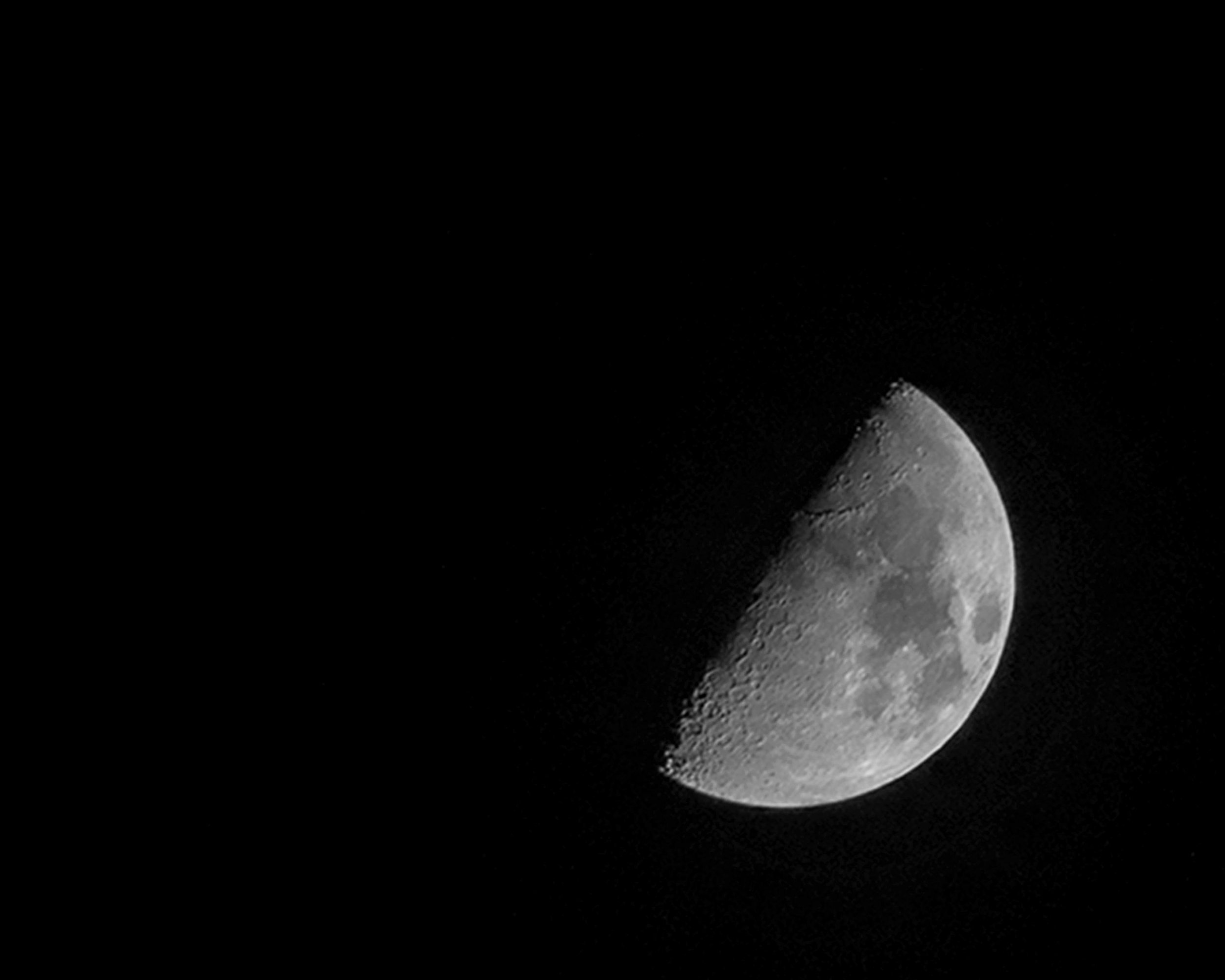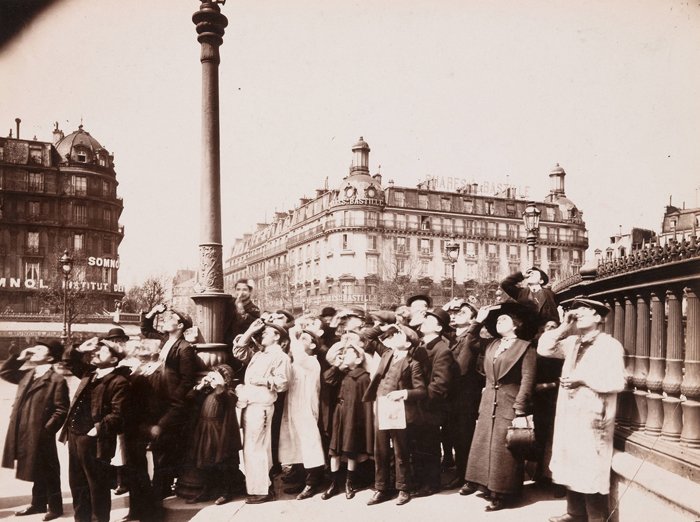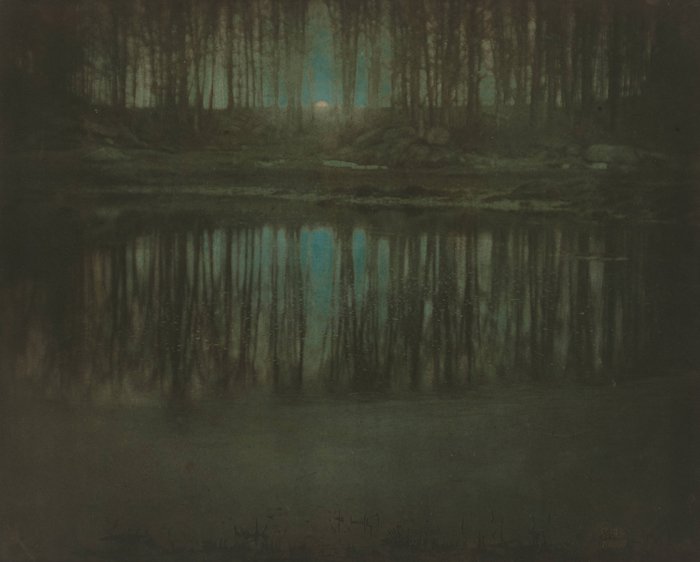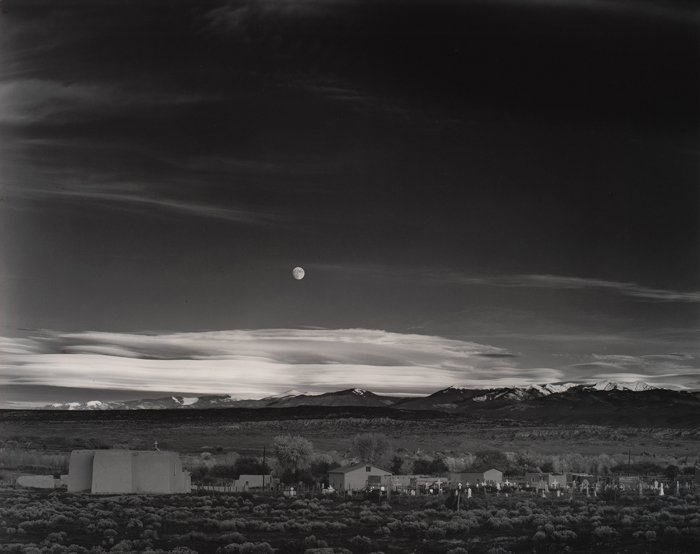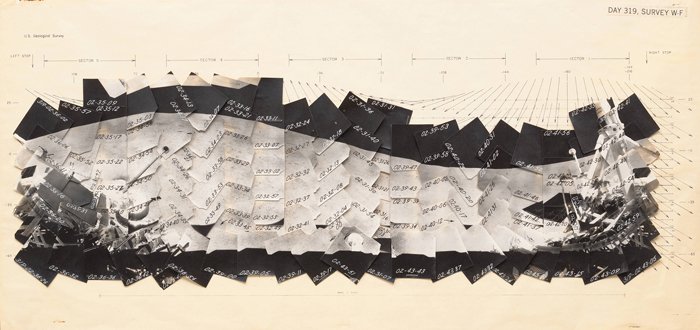Part 1 - A New Moon
1.1. Introduction
The moon is among photography’s most enduring subjects. Artists, scientists, commercial photographers, and amateurs alike have long used all methods and technologies at their disposal to capture views of the moon that might not be perceived by the naked eye. In the nineteenth century, scientists sometimes worked around the limitations of available technology by photographing drawings or models of the moon that were based on observations through a telescope.
Today, even those parts of the moon that cannot be observed from Earth have been photographed. The manifold ways in which the moon has been recorded—from close up, with its cratered surface shown in vivid detail, to distant and glowing in a vast night sky—have not only increased scientific knowledge of our planet’s closest neighbor but also reflected the emotional pull it has always had on us. More recently, artists have critiqued the imperial gaze directed at outer space, making visible the ways in which the moon has often been depicted as a territory to colonize.
Learning Objectives
Discover photography's roots in both art and science by observing the diverse ways the medium has been used across time to capture a single subject familiar to us all.
Learn how technological advancements have influenced photographic depictions of the moon.
Analyze the narratives of discovery conveyed by photographs of the moon and their omissions.
Video > MOMA. “Vik Muniz: Equivalents | ARTIST STORIES.” YouTube, 10 Feb 2016.
Video > Christie’s. “Eugène Atget’s Lost Photographs of Paris.” YouTube, 11 Nov 2016.
Video > SFMOMA. “Liz Deschenes on her cameraless photography.” YouTube, 11 OCT 2018.
Video > Marc Silber. “Ansel Adams Most Famous Photograph: Moon Over Hernandez.” YouTube, 23 Jun 2016.
Part 5 - Review & Respond
5.2.a. Reflect on One Subject, Many Perspectives
Reflect on your responses to the art and ideas we explored this week. What was new or surprising to you? Which of the artists or works particularly resonate with you or open up different perspectives on art or the world today? What new questions did this week raise for you?
I wasn’t aware that the term “vernacular photography” referred to photographs made for non-artistic, commercial purposes.
I also appreciated how a lot of the work presented here weren’t just of the moon itself, but of events and ideals related to the moon and space travel. From Eugene Atget’s “Pendant L’Eclipse” which was a photograph of Parisians observing a solar eclipse in 1912; to Aleksandra Mir’s “First Woman on the Moon at Gavin Brown’s enterprise, New York, February 15–March 1, 2003” and Cristina de Middel’s “The Afronauts,” which were about minorities who are not traditionally involved in space exploration.
One area I’d like to see explored more are contemporary fine art photographs of the moon taken today, especially in light of ever more powerful cameras, lenses and telescopes available to people today. Are there artists like Edward Steichen and the Photo-Secessionists working with images they made of the Moon?
5.2.b. Creative Challenge: Shoot for the Moon
You’ve explored many ways that artists have photographed the moon. Now add your photograph of the moon! Take or share a photograph of the moon. Feel free to interpret this assignment creatively—maybe the moon won’t be visible at all in your photograph, or moonlight will be an element in your process. The sky is not your limit! Tell us about your process and the decisions you made.
Steven Hanju Lee. “Midnight.” February 11, 2023.
I’m stuck in isolation in the hospital, following a stroke and a bout with chickenpox, and although I have a view, the moon isn’t visible tonight. So I took a page from artist Vik Muniz, and shot photographs of the hospital room floor. I then adjusted the photo’s brightness, contrast, highlights, and shadows to create the abstracted image seen here.
Review…
Vernacular Photography is the umbrella term for all photographs that were created as non-artistic, commercial purposes.
Leandro Katz photographed different lunar phases to construct an alphabet they used to write a complete sentence.
The photograph, After Haul (1958), by Suirei Kubota was circulated through newspapers.
People observing a solar eclipse is depicted in Eugene Atget’s photograph Pendant l’Eclipse (1912).
In the early nineteenth century, before the invention of satellite technology, telescopes aided photographers and scientists in taking pictures of the moon.
Edward Steichen used chemical processes for creating colour in his work Moonrise - Mamaroneck, New York (1904), to demonstrate that the medium of photography should be considered a fine art, like painting or drawing.
The following statements about Ansel Adams’s work, Moonrise, Hernandez, New Mexico (1941) are true:
Over the course of several years and multiple printings, Adams adjusted the colour contrast of his photograph to make the moon whiter and the sky darker;
Each print of the photograph comes from the same negative; and
It is divided into three vertical bands, including the darkness of the sky, the lightness of the cloud, and the barren landscape.
Aleksandra Mir’s work, First Woman on the Moon (1999) responds to:
The Apollo 11 landing, when Neil Armstrong walked on the moon; and
The idea that space exploration was solely a male venture.
The series of stapled gelatin silver prints in Surface of the Moon, Day 319, W-F (1967) by NASA recall photomontage and collage.
The choices photographers make are influenced by the technology available at the time.
Leandro Katz.
Left: Lunar Alphabet II. 1978–79. Gelatin silver prints, 96 5/8 × 29 3/16" (245.5 × 74.2 cm).
Right: Lunar Sentence II. 1978–79. Gelatin silver prints on six panels, overall 111 1/2 × 167" (282.2 × 424.2 cm).
Suirei Kubota. After Haul. c. 1958. Gelatin silver print, 10 3/4 × 13 3/4" (27.3 × 34.9 cm).
Eugène Atget. During the Eclipse (Pendant l’éclipse). 1912. Gelatin silver printing-out-paper print, 6 7/16 × 8 5/8" (16.3 × 21.9 cm).
Edward Steichen. Moonrise–Mamaroneck, New York. 1904. Platinum and ferroprussiate print, 15 1/4 × 19" (38.7 × 48.2 cm).
Ansel Adams. Moonrise, Hernandez, New Mexico. 1941. Gelatin silver print, 15 × 18 1/2" (38.1 × 47 cm).
Aleksandra Mir. First Woman on the Moon at Gavin Brown’s enterprise, New York, February 15–March 1, 2003. 2003. Invitation flyer, sheet, 11 × 8 1/2" (27.9 × 21.6 cm).
U.S. Geological Survey and NASA, Surveyor III. Surface of the Moon, Day 319, W-F. 1967. Cut and stapled gelatin silver prints with ink and gouache on diazotype, 14 1/2 × 30 3/8" (36.9 × 77.1 cm).
